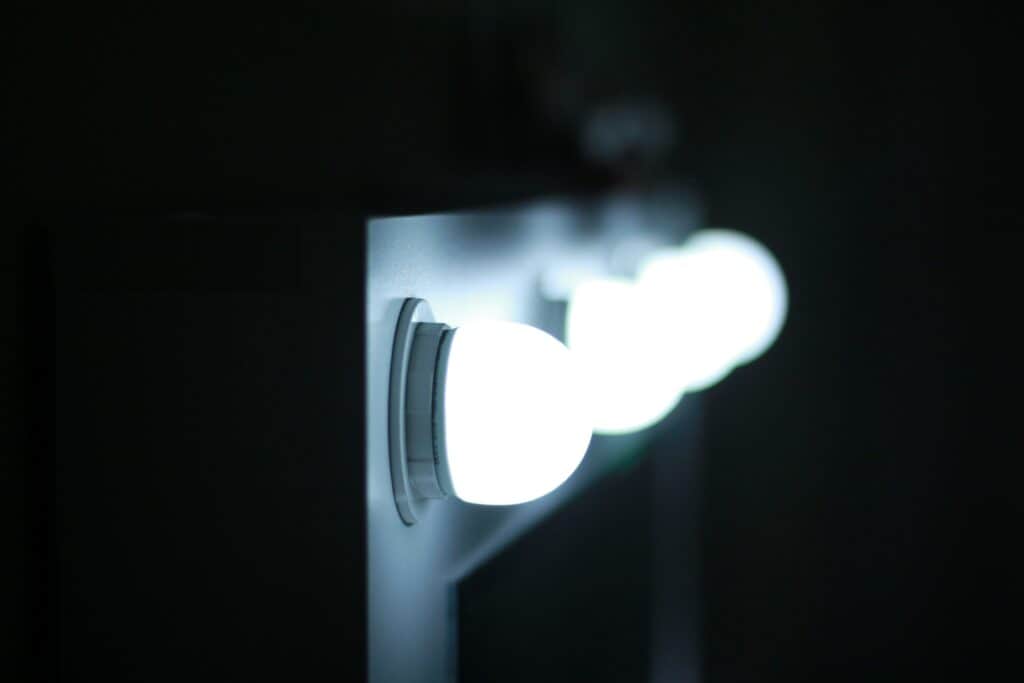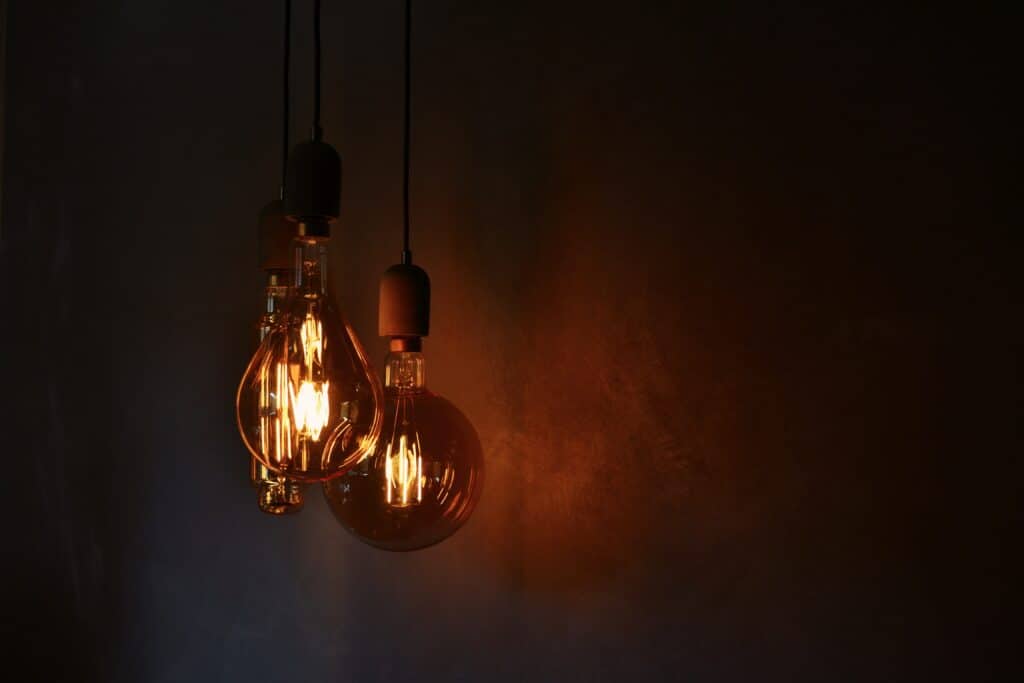
As the incandescent bulb is gradually phased out in many countries around the world homeowners need to get familiar with CFLs and LEDs. Helping people do just this was the aim of our Beginner’s Guide to Energy Saving Light Bulbs. But in today’s post I want to dig a little further into just how much you should be paying for those bulbs.
If you look at the lifetime cost savings of LEDs or CFLs versus incandescent bulbs they are a complete no brainer. But in the case of an expensive LEDs in particular, falling prices may mean waiting a little makes sense.
So how much should you pay for those shiny new bulbs? The short answer is whatever you want. It’s your cash and spending money on bulbs rather than electricity does a fine service to the planet. But the long answer much more interesting.
If your goal is to save money, you’ll prioritize bulbs you use a lot and prefer CFLs to LEDs in circumstances where you are happy with their light and need a lot of lumens.
To the data!!
Getting bang for your lighting buck
I’m going to use an American example here but the principles apply to everyone, and I’ll use global data in a minute, so don’t switch off (writing about lighting is fertile ground for bad puns).
The average American home uses 1,707 kWh of electricity each year on lighting. Similar to a Mexican home’s total use (and mine for that matter). It has 67 lamps (individual bulbs), that are used 1.6 hours per day and have a mean wattage of 47.7 W.

So the Average American household is spending about $200 a year on lighting, and has around 50 incandescent or halogen bulbs whose energy use could be reduced by 75-90% by a switch to CFLs or LEDs.
Now they could probably switch all of their remaining incandescent lamps to LEDs for around $600 today (more if they have high wattage external floods too). This would pay itself back in energy savings within 4-5 years, which is fine.
But the much smart play is to go after the high use bulbs first.
Replace your high use bulbs now!
If you have incandescent bulbs that you use a lot, more than 4 hours a day, you just need to change them.
To help me explain why this is the case I’m going to show you the average annual running costs of a 25W, 60W and 100W incandescent bulb in different countries. The figures are the US dollar cost for running a bulb four hours a day.
In Germany the annual running cost of 25W, 60W and 100W bulbs used 4 hours each day are $18, $31 and $51 respectively. In the UK the figures are $7, $18 and $30 respectively, and in the US they are $4, $10 and $17.
Basically all of these bulbs can be replaced with LEDs at a price less than one years running costs of the incandescent, with the exception of the 100W bulb in the US. They could also be replaced with CFLs for less than half these figures.
The point is you’d be mad not to get on and change these bulbs now. In countries with cheaper electricity like the US, Canada and China it is possible the price of a 100W replacement LED will drop more than the annual running cost over the next year. But it is not a sure thing. If you can find a CFL you like even better.
If you use an incandescent bulb a lot you should change it now.
Spend sensibly on moderate use bulbs
Once you’ve changed your high use bulbs you’ll want to look at ones in general use. As I noted earlier that average lamp in a US home is used about 1.6 hours. However if you exclude areas like attics, garages and hallways it is very common to use a bulb for two hours a day. So two hours a day is a good number to look at.
Here are the same calculations using 2 hours.
If you live somewhere with expensive electricity changing a bulb you use two hours a day is still going to pay itself back in a year or two. So just go get the bulbs you want today, don’t wait around.
With cheaper electricity the payoffs are more nuanced. Switching to a CFL will still payback within a year or so. But if you pay through the nose for an expensive LED it could take many years to payback. In particular it may not be a good idea to pay for an expensive 100W or 75W replacement, because its price might drip more than you’ll save over the coming year.
Just to be clear, I still think it makes financial sense to change all bulbs you use moderately. My point is that you should avoid paying more than $20 a bulb unless you are consciously paying more for funky design or stellar light quality. At the same time I don’t mean you should just buy cheap LEDs. You are looking for value. This means a good make at a sensible price.
For regular use bulbs look at CFLs and good value LEDs
Take your time on low use lamps
If your main motivation is to save energy you will probably change all your bulbs to LEDs or CFLs. But if you are budget minded, there are certain bulbs you should take your time about. Indeed spending a lot of money on these bulbs is the fastest way to ruin the return you’ll get on your lighting project.
Here are the running costs at one hour per day.
Interestingly there is still a pretty solid financial case for changing bulbs that you use just one hour per day in countries with expensive electricity. In Australia for example the high cost of electricity means a CFL or good value LED is still a sensible option for switching out a low use incandescent bulb.
In places like the US or Canada the price of LED replacements are likely to fall by more than these running costs over the next year. So if you can’t find a CFL that will work, or a great value LED, you might want to sit tight and watch prices drop.
One thing is sure. A bulb that you seldom use should be at the bottom of your priority list. Let me give you a personal example. I have an incandescent bulb in my attic that I’d be lucky to use 10 hours a year. I need it to come on instantly and give off plenty of lumens. It costs me literally pence a year (yes, we actually have pence) and I have no intention of changing it. In fact I kept the odd old bulb for it in case it blows.
In your attic, garage, hall or spare room you may have bulbs you use very little. Do not bother changing these until you’ve sorted the spaces you use regularly, and can get decent replacement bulbs at a very cheap price.
Low use incandescent bulbs are a low priority
Where are the busy bulbs?
The main point of this article is to show you why you should target busy bulbs first. This is because they are where the big energy savings are and quick the payback is. But where are these busy bulbs?
The graph below gives some examples of the average lamp use by room in the US.
The thing that shocked me when I saw this was the exterior numbers. American’s have their external lights on for 2.9 hours per day, and they use as much energy as their living rooms, kitchens and bedrooms combined. All in all over a third of US home lighting costs are for lighting outside?!
Anyhow, the point is this. You should target bulbs you use a lot! These are typically in your kitchen, living room and if you aren’t using sensors perhaps outside? For a five step process to help you choose the right lamp check out our Ultimate Beginner’s Guide to Energy Saving Light Bulbs.
Lindsay Wilson
I founded Shrink That Footprint in November 2012, after a long period of research. For many years I have calculated, studied and worked with carbon footprints, and Shrink That Footprint is that interest come to life.
I have an Economics degree from UCL, have previously worked as an energy efficiency analyst at BNEF and continue to work as a strategy consultant at Maneas. I have consulted to numerous clients in energy and finance, as well as the World Economic Forum.
When I’m not crunching carbon footprints you’ll often find me helping my two year old son tend to the tomatoes, salad and peppers growing in our upcycled greenhouse.
